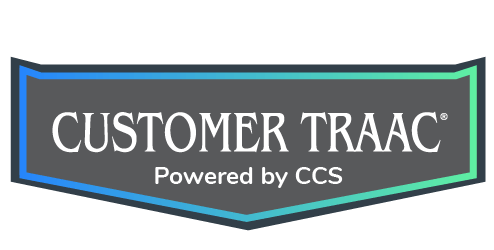10 Essential Customer Support Skills Every Representative Needs to Succeed
admin | Uncategorized
Patience
A good customer support representative has tremendous patience. Patience can help with time management, better communication skills, and combat irate customers. A patient representative can help alleviate irate customers by making them feel heard, understood, and can get to the resolution quicker. Customers calling with an issue, may already be a little elevated or annoyed, and a good rep knows that great service doesn’t always mean fast service. They can slow down, calm them down and solve their problem.
Persuasiveness
Persuasive conversation doesn’t just mean making the sale. Persuasion means speaking with conviction, confidence, and in a poised manner. Using calm, professional language can help instill trust between the customer and the rep. Avoiding slang words and casual language helps to sound more professional and will increase the ability to persuade a customer one way or another. A good customer support representative can upsell a customer in a way that solves their problem in an even better way, not a forceful way.
Great Communication Skills
Great communication skills go beyond being able to talk on the phone. Communication includes speaking in a way that is not confusing or disrespectful to a customer. It also involves listening fully so you can understand what they are saying right out the gate and get to the root of the problem efficiently. What you say as the representative matters and needs to be as clear and precise as possible. This includes avoiding certain words or phrases that may be misconstrued. Avoid using phrases like “that service will be included in your final bill” because sometimes included indicates no extra charge, when actually you mean those are the services that they will pay for at the end. Being able to carry a conversation is a good skill to have, but more importantly, speaking in clear, concise language is key to good communication.
Industry Knowledge
Industry knowledge in customer service is very important for outsourced BDCs, but especially important in the automotive industry. These customer interactions will require a lot of knowledge regarding vehicle maintenance and specs. The best customer service professionals have gathered extensive knowledge of the product or service they are dealing with. Without knowing about the automotive industry, car dealerships, and common car issues, an automotive business development center will not be able to solve customer issues as quickly as possible. Granted, some industry knowledge comes with years of experience, but it’s amazing how much a service suggestion, or suggested model based on their current car could wow a customer.
Adaptability
Being able to be flexible in any situation, and adjust trajectory quickly is crucial to maintaining that good client to representative communication. Some people may say adaptability is one of the most important skills a good customer support rep should have. A change in attitude from the customer or an unsatisfied customer can make things feel awkward in a split second. Adaptability means staying on your toes and being able to change the course of the conversation or issue immediately, and seamlessly.
Understanding
As mentioned, along with good communication, being able to understand the client can set the entire tone of the interaction with them. Part of understanding the customer is making sure you acknowledge them. Saying “I completely understand” is important, but only if you really do. Try repeating back what they said to make sure you understand completely, instead of just assuming you do – maybe they don’t have the same communication skills that you do, and it’s important to get to that point where you both acknowledge the understanding.
Goal-Oriented Mindset
In automotive customer support, not every interaction will be a customer with a problem. Sometimes the rep is reaching out to the customer to sell services, or schedule appointments, or just ask how their service has been thus far. No matter if the call is inbound or outbound, it’s good to go into it every time with a goal-oriented mindset. The goal is to leave a satisfied customer, every time. Plus, goal-oriented people tend to be more driven and competitive – both great qualities to have in your customer support team.
Emotional Intelligence
Emotional intelligence is defined as the capacity to be aware of, control, and express one’s emotions, and to handle interpersonal relationships judiciously and empathetically. Representatives possessing emotional intelligence can carry themselves professionally no matter what comes their way. They know who they are, what they want, and what their intentions are. They know not to take things personally with irritated customers, and can be in complete control of how they represent themselves and the company.
Positive Influence & Attitude
Maintaining a positive attitude is a given when it comes to customer service. An angry customer service agent is going to leave an angry customer and won’t take them very far. In addition to that, the ability to communicate with positive language, rather than negative can drive the conversations in the right direction, and it’s easy as switching a few different ways of saying things. For example, saying “I can’t get you that product until next month; it is back-ordered and unavailable at this time,” sounds negative. Instead, saying “That product will be available next month. I can place the order for you right now and make sure that it is sent to you as soon as it reaches our warehouse.” Using positive language sounds much more professional and considers the customer’s feelings.
Empathy
We touched on empathy a bit when talking about understanding and acknowledging the customer. Displaying empathy with a customer not only proves to them you truly care, but it can turn a bad situation around if the conversation ends with acknowledging the customer’s feelings, and getting to a resolution. Customers that are buying a car, or have recently bought a car have made a very emotional purchase. There were probably ups and downs, but inevitably a positive note when they purchase a vehicle. Imagine something happening a few weeks after their new car was purchased, which makes them very upset and the representative cannot relate. Actively feeling empathy with a customer can be the difference between a negative and positive customer experience.
Customer Traac knows what it takes to build a proper team that helps your dealership not only succeed, but thrive in the industry. Our team of experts possesses the qualities it takes to properly nurture clients in this industry. Request a proposal, or contact us here.











 How many times have you had a friend or family member tell you about a terrible customer service experience they had? Probably a lot. People tend to share bad experiences more than good when it comes to customer service. They want to help save people from having a similar bad experience.
How many times have you had a friend or family member tell you about a terrible customer service experience they had? Probably a lot. People tend to share bad experiences more than good when it comes to customer service. They want to help save people from having a similar bad experience. A customer wants to get all their issues resolved in one fell swoop. Treating a customer service call as an opportunity for future appointments and sales is the way to achieve customer retention. In the case of service calls at dealerships, when a customer calls in, it’s possible to schedule out their maintenance a full year in advance. Not only does this free up future calls, but the customer feels cared for, and that they received great service. They know they don’t have to follow-up in the future, or receive any calls for appointment reminders. Everything is done then and there.
A customer wants to get all their issues resolved in one fell swoop. Treating a customer service call as an opportunity for future appointments and sales is the way to achieve customer retention. In the case of service calls at dealerships, when a customer calls in, it’s possible to schedule out their maintenance a full year in advance. Not only does this free up future calls, but the customer feels cared for, and that they received great service. They know they don’t have to follow-up in the future, or receive any calls for appointment reminders. Everything is done then and there. There is one thing to simply help a customer resolve the issue they had, it’s another to curate the conversation in a way that wows the customer. Like many of us, I’m sure when we are setting up to call a company’s customer service team, we may not be overly excited. There’s no guarantee good service will be received, so expectations may be pretty low if it’s their first call. Take advantage of those expectations and blow them out of the water.
There is one thing to simply help a customer resolve the issue they had, it’s another to curate the conversation in a way that wows the customer. Like many of us, I’m sure when we are setting up to call a company’s customer service team, we may not be overly excited. There’s no guarantee good service will be received, so expectations may be pretty low if it’s their first call. Take advantage of those expectations and blow them out of the water.
 “Within 60 days we found an increase in repair sales. My customer satisfaction level went up because my people had more quality time to spend with our guests,” he says. “Here’s the big thing—my R.O. counts started to go up and I started to get more appointments mid-afternoon and Saturday because I’d taken control of my schedule away from my Service Advisors.”
“Within 60 days we found an increase in repair sales. My customer satisfaction level went up because my people had more quality time to spend with our guests,” he says. “Here’s the big thing—my R.O. counts started to go up and I started to get more appointments mid-afternoon and Saturday because I’d taken control of my schedule away from my Service Advisors.”